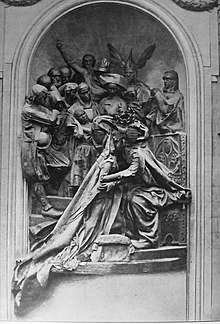
Back Unuiĝo de Bretonio al Francio Esperanto Union de la Bretagne à la France French Penyatuan Brittany dan Prancis ID Fransa ve Bretonya'nın birleşmesi Turkish
This article includes a list of general references, but it lacks sufficient corresponding inline citations. (August 2013) |

The union of the Duchy of Brittany with the Crown of France was the culmination of a political process begun at the end of the 15th century in the wake of the Mad War. It resulted in the Edict of Union of 13 August 1532 and the incorporation of the duchy into the Crown lands of France, a critical step in the formation of modern-day France.
As a territorial principality of the Kingdom of France, Brittany had enjoyed varying degrees of autonomy since Clovis I was given authority over the Gallo-Roman domain during the 5th century. It was first recorded as a "duchy" during the rule of Nominoe in 846, in likely recognition of Carolingian overlordship.[1] Over the centuries, the fealty demonstrated by the Duchy of Brittany toward the French king depended significantly on the individuals holding the two titles, as well as the involvement of the English monarchy at that particular time. The reign of Francis II, Duke of Brittany, was at an especially crucial time, as the nobles struggled to maintain their autonomy against the increasing central authority desired by Louis XI of France. As a result of several wars, treaties, and papal decisions, Brittany was united with France through the eventual marriage of Louis XI's son Charles VIII to the heiress of Brittany, Anne in 1491. However, because of the different systems of inheritance between the two realms, the crown and the duchy were not held by the same hereditary claimant until the reign of Henry II, beginning 1547.
- ^ Smith, Julia M. H. Province and Empire: Brittany and the Carolingians. Cambridge University Press: 1992, 97.
© MMXXIII Rich X Search. We shall prevail. All rights reserved. Rich X Search